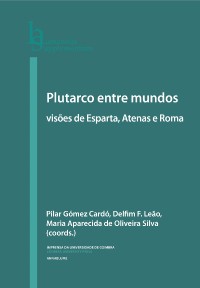Please use this identifier to cite or link to this item:
https://hdl.handle.net/10316.2/36419| DC Field | Value | Language |
|---|---|---|
| dc.contributor.author | Rocha, Roosevelt | |
| dc.date.accessioned | 2015-04-16T09:18:15Z | |
| dc.date.accessioned | 2020-09-09T13:09:10Z | - |
| dc.date.available | 2015-04-16T09:18:15Z | |
| dc.date.available | 2020-09-09T13:09:10Z | - |
| dc.date.issued | 2014 | - |
| dc.identifier.isbn | 978-989-26-0920-1 | |
| dc.identifier.isbn | 978-989-26-0921-8 (PDF) | |
| dc.identifier.uri | https://hdl.handle.net/10316.2/36419 | - |
| dc.description.abstract | The city of Sparta is reputed to have been a highly militarized society. However, Sparta was not a city dedicated solely to war throughout antiquity. In the seventh century BC, Sparta was an important artistic center that attracted foreign poets and probably had its own talents. These two images are present in the work of Plutarch: in the Lives of the Laconian leaders Lycurgus, Lysander, Agesilaus, Agis and Cleomenes, and in other writings from the Moralia dedicated to Sparta, on the one hand, and the book On Music, on the other hand. Accordingly, my purpose here is to discuss selected passages in the Plutarchan corpus where we find these two images of Spartan society, trying to put them in perspective so as to question the idea that the Lacedaemonians were just warriors interested only in military training and battles. | eng |
| dc.description.abstract | A cidade de Esparta tem a fama de ter sido uma sociedade extremamente militarizada. Porém Esparta não foi uma cidade dedicada somente à guerra ao longo de toda a Antiguidade. No século VII a. C., Esparta foi um importante centro artístico que atraiu poetas estrangeiros e, provavelmente, teve seus próprios talentos. Essas duas imagens estão presentes na obra de Plutarco: nas Vidas dos líderes lacônios Licurgo, Lisandro, Agesilau e Ágis e Cleômenes, e em outros escritos dos Moralia dedicados a Esparta, por um lado, e no livro Sobre a Música, por outro lado. Assim, meu objetivo, aqui, é discutir passagens selecionadas no corpus plutarquiano onde essas duas imagens da sociedade espartana aparecem, tentando colocá‑las em perspectiva para relativizar a ideia de que os lacedemônios eram apenas guerreiros interessados somente em treinamentos militares e batalhas. | por |
| dc.language.iso | por | - |
| dc.publisher | Imprensa da Universidade de Coimbra | por |
| dc.publisher | Annablume Editora | por |
| dc.relation.ispartof | http://hdl.handle.net/10316.2/36409 | por |
| dc.rights | open access | - |
| dc.subject | Plutarch | eng |
| dc.subject | Sparta | eng |
| dc.subject | Mirage | eng |
| dc.subject | Poetry | eng |
| dc.subject | Music | eng |
| dc.subject | Plutarco | por |
| dc.subject | Esparta | por |
| dc.subject | Miragem | por |
| dc.subject | Poesia | por |
| dc.subject | Música | por |
| dc.title | A Esparta de Plutarco entre a guerra e as artes | por |
| dc.title.alternative | Plutarch’s Sparta between war and the arts | eng |
| dc.type | bookPart | por |
| uc.publication.firstPage | 159 | - |
| uc.publication.lastPage | 172 | - |
| uc.publication.location | Coimbra | por |
| dc.identifier.doi | 10.14195/978-989-26-0921-8_8 | - |
| uc.publication.digCollection | PB | por |
| uc.publication.orderno | 10 | - |
| uc.publication.area | Artes e Humanidades | por |
| uc.publication.bookTitle | Plutarco entre mundos: visões de Esparta, Atenas e Roma | - |
| uc.publication.manifest | https://dl.uc.pt/json/iiif/10316.2/36419/208896/manifest?manifest=/json/iiif/10316.2/36419/208896/manifest | - |
| uc.publication.thumbnail | https://dl.uc.pt/retrieve/11145413 | - |
| uc.publication.parentItemId | 54497 | - |
| uc.itemId | 69812 | - |
| item.grantfulltext | open | - |
| item.fulltext | With Fulltext | - |
| Appears in Collections: | Plutarco entre mundos: visões de Esparta, Atenas e Roma | |
Files in This Item:
| File | Description | Size | Format | |
|---|---|---|---|---|
| a_esparta_de_plutarco_entre_a_guerra_e_as_artes.pdf | 1.17 MB | Adobe PDF |  |
Items in DSpace are protected by copyright, with all rights reserved, unless otherwise indicated.
